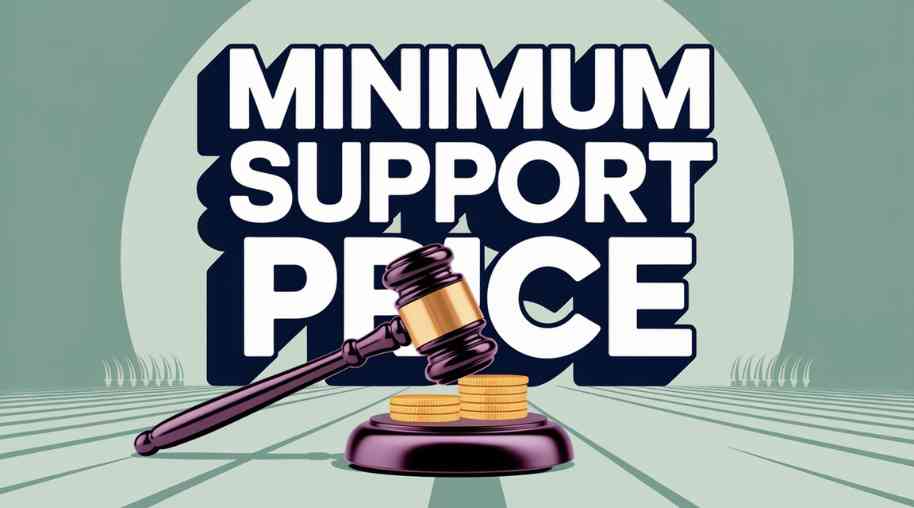MSP Full Form-Minimum Support Price
by Shashi Gaherwar
0 2008
Introduction
The Minimum Support Price (MSP) is a critical policy instrument used by the government to safeguard farmers from price fluctuations in agricultural markets. It ensures that farmers receive a minimum price for their crops, even if market prices fall below a certain level. MSP is a key tool in agricultural economics that helps stabilize farm incomes and encourages agricultural production.

This article explores the concept of MSP, its significance, how it is determined, its impact on the economy, and the challenges associated with it.
What is Minimum Support Price (MSP)?
The Minimum Support Price (MSP) is the price at which the government purchases crops directly from farmers to protect them from market fluctuations. It is announced before each sowing season and is applicable to specific crops. The primary objective of MSP is to ensure that farmers get a fair price for their produce, preventing distress sales due to price crashes.
Objectives of MSP
1. Income Security for Farmers: Ensures a stable and guaranteed price for agricultural produce.
2. Price Stabilization: Helps prevent extreme price fluctuations in agricultural markets.
3. Encouraging Crop Diversification: Promotes the production of essential crops for food security.
4. Reducing Rural Poverty: Provides economic support to farmers, particularly small and marginal ones.
5. Ensuring Food Security: Helps maintain buffer stock for public distribution systems.
How is MSP Determined?
The MSP is set by the Commission for Agricultural Costs and Prices (CACP), which considers several factors:
• Cost of Production: Ensuring farmers recover their input costs.
• Demand and Supply Conditions: Maintaining market balance.
• Market Price Trends: Avoiding drastic price crashes.
• Intercrop Price Parity: Balancing prices across different crops.
• Impact on Consumers and Inflation: Preventing excessive price rise for consumers.
• International Price Trends: Ensuring competitiveness in global markets.
The government announces MSPs for 23 crops annually, including major cereals, pulses, oilseeds, and commercial crops like cotton and sugarcane.
Impact of MSP on Farmers and the Economy
1. Positive Impact
• Farmer Welfare: Provides a financial cushion against market uncertainties.
• Agricultural Growth: Encourages farmers to invest in better inputs and increase productivity.
• Food Security: Ensures sufficient grain procurement for the Public Distribution System (PDS).
• Economic Stability: Protects rural livelihoods and contributes to GDP growth.
2. Challenges and Criticism
• Limited Procurement: Only a fraction of farmers benefit due to procurement constraints.
• Regional Disparities: States like Punjab and Haryana benefit more due to better procurement infrastructure.
• Environmental Concerns: Excessive MSP for water-intensive crops like rice leads to over-exploitation of groundwater.
• Market Distortions: Higher MSP may lead to inflationary pressures.
• Budgetary Burden: Government expenditure on procurement and storage is substantial.
Alternatives and Reforms in MSP
To address challenges, several reforms are proposed:
1. Direct Benefit Transfers (DBT): Providing price support directly to farmers instead of procurement.
2. Decentralized Procurement: Encouraging state governments to procure crops locally.
3. Market Reforms: Strengthening e-NAM (National Agriculture Market) for better price discovery.
4. Diversification Policies: Encouraging farmers to grow pulses and oilseeds instead of only cereals.
5. Improved Storage and Logistics: Reducing post-harvest losses through better warehousing.
The Minimum Support Price (MSP) remains a crucial safety net for Indian farmers, ensuring income stability and food security. However, challenges such as procurement inefficiencies, regional disparities, and environmental concerns need to be addressed through policy reforms. A balanced approach that includes market-driven solutions and direct farmer support can make MSP more effective in sustaining agricultural growth and rural development.

Share:








Comments
Waiting for your comments